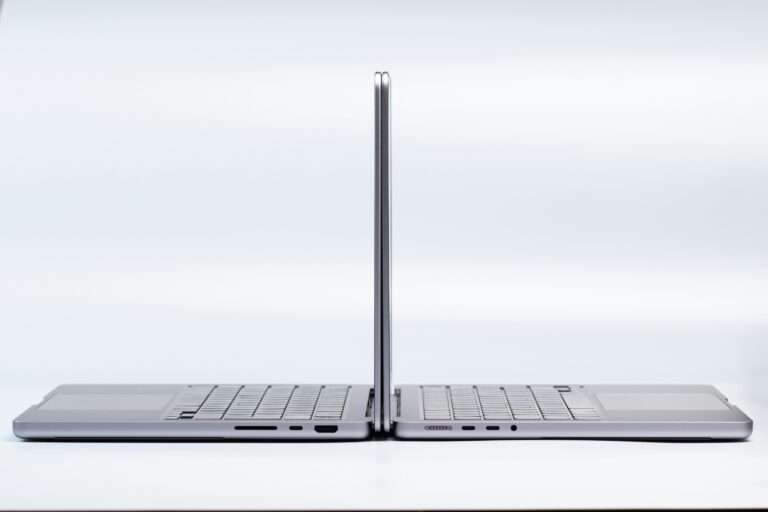Display is one of the most significant factors you should consider Before buying a laptop, and it can be overwhelming with all the options available. This guide will help you choose the perfect display based on your budget and needs.
How can I maximize my laptop's battery life?
Is there a display option that won't drain my battery too quickly?
Why does my laptop with an OLED display drain battery faster than expected?
Panel Types
- TN (Twisted Nematic): This outdated technology should be avoided. TN panels are known for poor color reproduction and narrow viewing angles.
- OLED (Organic Light-Emitting Diode): OLED panels are at the top end of the market. They excel in dark environments with perfect blacks and unmatched contrast. However, OLED might not be bright enough for well-lit rooms or outdoor use. These displays are ideal if you primarily use your laptop in low-light settings and can afford the premium price. Check the Best OLED Laptops for 2024 if you have already made your decision.
- Mini LED: If brightness is your priority, Mini LED panels are an excellent choice. They offer great brightness and are ideal for bright rooms and outdoor use. However, this comes at the cost of contrast, which might be less impressive in dark environments. Mini LED panels are also on the higher end of the price spectrum.
- IPS (In-Plane Switching): IPS displays are the most versatile and budget-friendly option. They provide good viewing angles, decent color accuracy, and sufficient brightness for most indoor settings. IPS panels are also generally more power-efficient, which can lead to longer battery life compared to other panel types. This makes IPS the right choice for most people, especially those on a budget.

Brightness: How Much Do You Need?
Brightness is crucial, especially if you are planning to use your laptop outdoors or in well-lit rooms. Here’s a simple guide:
- 200 to 300 nits: Suitable for most indoor environments.
- 400 to 500 nits: Ideal for outdoor use or very bright rooms.
- 600+ nits: Necessary for a satisfying HDR (High Dynamic Range) experience.
Be cautious with laptops that advertise extremely high brightness, like 1500 nits, as this might only apply to small areas of the screen rather than the entire display.
- Aspect Ratio: Maximizing Screen Real Estate
For laptops, the standard 16:9 aspect ratio is being replaced by slightly taller options like 16:10 or even 3:2. This extra vertical space can be great for a productivity boost. Taller aspect ratios also allow for better design flexibility, offering more room for cooling solutions and larger, more comfortable keyboards.
- Resolution: How Sharp Does It Need to Be?
Resolution determines how sharp your display looks, but higher isn’t always better, especially when considering battery life.
- Full HD (1080p): Sufficient for most users, providing a good balance between sharpness and battery life.
- Quad HD (1440p): Offers a noticeable improvement in sharpness, especially if you have good eyesight.
- 4K (2160p): Typically unnecessary for most users. It can drain your battery quickly without a significant improvement in day-to-day use.
Refresh Rate
Increasing the refresh rate above 60Hz can significantly improve your experience, especially if you plan on gaming. Even non-gamers will notice smoother visuals in everyday tasks like photo editing or even simple file management. However, be aware that higher refresh rates can reduce battery life.
- 144Hz: This is a sweet spot for gamers, providing a smooth experience without draining too much battery.
- Above 144Hz: Diminishing returns start to set in, so unless you’re a competitive gamer, this might be overkill.
Color Accuracy
A display’s color gamut determines how many colors it can produce. For general use, aim for a display that covers the sRGB color space, which is the standard for web content. If you’re into graphic design or video editing, consider displays that offer a wider color gamut and are factory-calibrated for better accuracy.
- sRGB: Sufficient for most users.
- Wide Gamut (like Adobe RGB or DCI-P3): Necessary for professionals in creative fields.
Conclusion: Which Laptop Displays to Consider
Based on your needs and budget, here are some laptops known for their excellent displays:
- High-end: Dell XPS 13 Plus, MacBook Pro
- Mid-range: Samsung Galaxy Book, HP Spectre
- Gaming: ASUS ROG Zephyrus G14 and G16
By understanding these key factors, you can choose a laptop display that perfectly suits your needs, ensuring that you get the best possible experience for your money. Read our other article to know which Laptop is Best for you.




